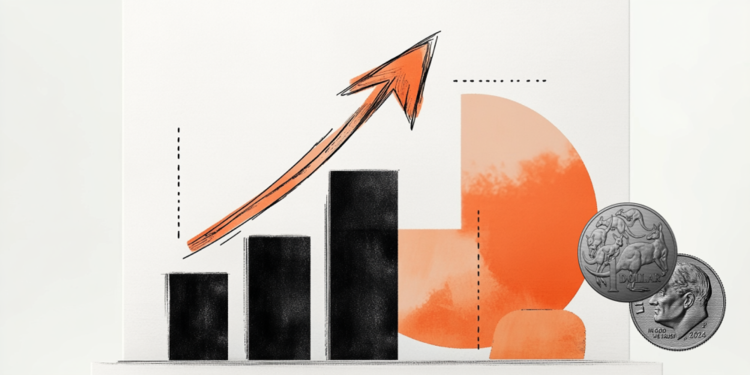At a Glance
- AUD/USD is trading higher around 0.6510, influenced by upcoming US CPI data.
- US inflation data is anticipated to show an increase, potentially impacting the US Dollar.
- Renewed US-China trade tensions could affect the Australian Dollar, despite its current outperformance.
- Investors are also awaiting Australia’s Q3 CPI data later in the month.
AUD/USD Edges Higher Amid Inflation Data Watch
The AUD/USD currency pair experienced a modest increase, trading 0.3% higher to approximately 0.6510 during Thursday’s European trading session. This movement occurs within a tight three-day trading range, established between 0.6473 and 0.6525. Market participants are keenly awaiting the United States Consumer Price Index (CPI) data for September, scheduled for release on Friday.
⚡ The upcoming US inflation data is expected to have a significant impact on the US Dollar. The release has faced delays due to the ongoing federal shutdown. Economists forecast that headline inflation in the US will show a faster year-on-year increase, reaching 3.1% compared to the previous 2.9%. Core inflation figures are also projected to see steady growth at 3.1%.
The Australian Dollar has demonstrated strength against its major currency counterparts, leading to the upward movement in the AUD/USD pair. This outperformance occurs despite the emergence of renewed trade tensions between the United States and China.
US-China Trade Relations and AUD/USD Impact
Recent reports indicate that Washington is planning to implement export controls on software-powered products, ranging from laptops to jet engines, destined for China. This measure is reportedly a response to restrictions previously imposed by Beijing on the export of rare earth minerals to the US.
📍 This development precedes a planned meeting between US Treasury Secretary Scott Bessent and China Vice Premier He Lifeng, scheduled to take place in Malaysia over the weekend.
Historically, escalating US-China trade tensions have presented a technically unfavorable scenario for the Australian Dollar. Given the Asia-Pacific region’s significant reliance on exports to China, such tensions can pose economic challenges.
Domestic Economic Indicators on the Horizon
On the domestic front, Australian investors are now anticipating the release of the nation’s Gross Domestic Product (GDP) data for the third quarter. This economic indicator is slated for publication on October 29.
Understanding Inflation Metrics
Inflation measures the rate at which the prices for a basket of goods and services increase over time. Headline inflation is typically reported as a monthly (MoM) and yearly (YoY) percentage change. Core inflation, however, excludes volatile components like food and fuel, which can be influenced by geopolitical events and seasonal factors.
📊 Core inflation is closely monitored by economists and is the primary target for central banks, which aim to maintain it at a stable level, generally around 2%.
The Consumer Price Index (CPI) is a key metric that tracks changes in the prices of a defined set of goods and services. Like headline inflation, CPI is usually presented as MoM and YoY percentage changes. Core CPI, which excludes volatile food and fuel prices, is the figure that central banks focus on. When Core CPI rises above the 2% target, it often leads to central banks raising interest rates. Conversely, a fall below 2% may prompt interest rate cuts. Generally, higher interest rates are considered positive for a currency’s value, while lower inflation tends to weaken it.
💡 Counterintuitively, high inflation within a country can lead to an appreciation of its currency. This occurs because central banks typically respond to high inflation by increasing interest rates. Higher interest rates can attract foreign investment as investors seek better returns, thereby increasing demand for the country’s currency.
Historically, gold was considered a traditional hedge against high inflation due to its perceived ability to preserve value. While investors may still turn to gold as a safe-haven asset during extreme market volatility, its role as an inflation hedge has evolved. When inflation is high, central banks raise interest rates to control it. These higher rates increase the opportunity cost of holding non-interest-bearing assets like gold, making interest-bearing assets or cash deposits more attractive alternatives.
✅ Conversely, lower inflation rates can be beneficial for gold prices. As inflation moderates, central banks may lower interest rates, making gold a more attractive investment option compared to lower-yielding interest-bearing assets.
Expert Summary
The AUD/USD pair is experiencing upward pressure as traders await key US inflation data. While the Australian Dollar shows relative strength, ongoing US-China trade tensions and upcoming domestic economic reports introduce elements of uncertainty for the currency’s outlook.

